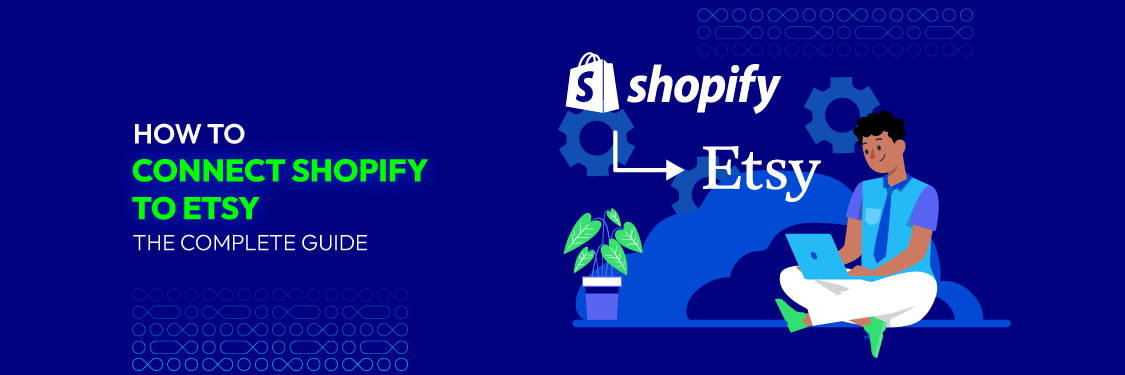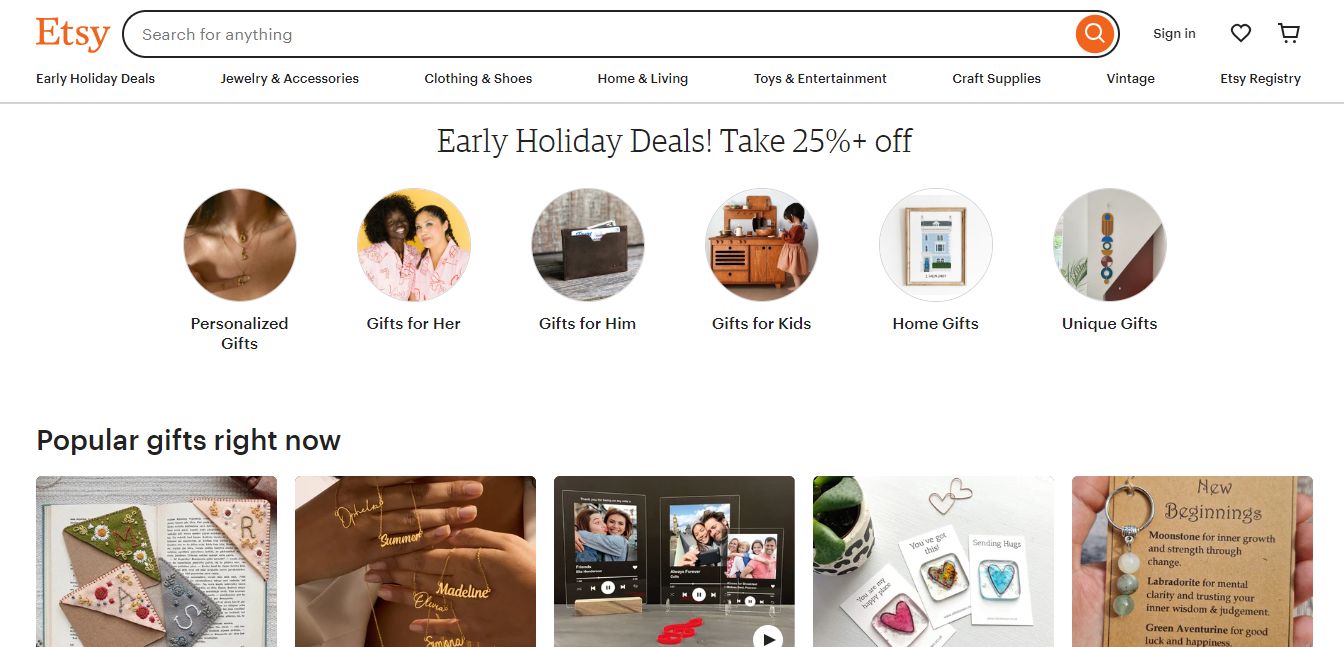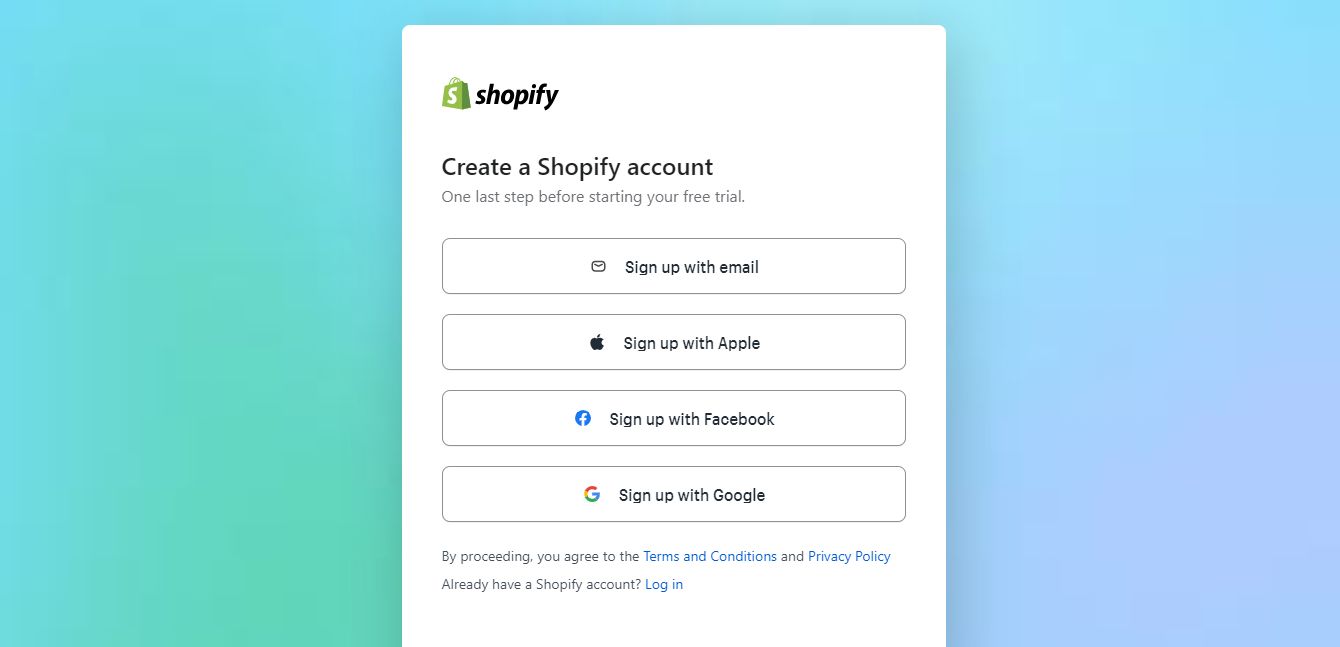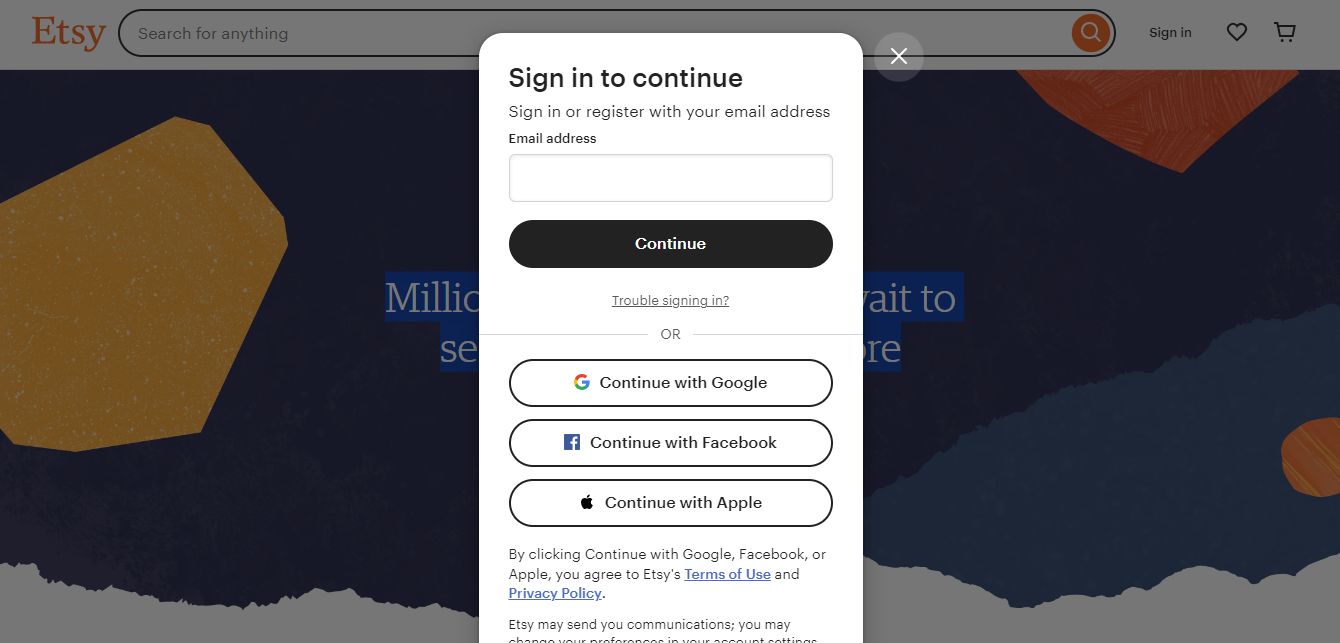How To Connect Shopify To Etsy: The Complete Guide
Summer Nguyen | 01-22-2024

Expanding your e-commerce presence and reaching a broader audience is a strategic move for any online business. One effective way to achieve this is by connecting Shopify to Etsy, two powerful platforms that offer unique opportunities for entrepreneurs and sellers.
In this comprehensive guide, we’ll show you how to connect Shopify to Etsy, enabling you to tap into Etsy’s vast customer base while maintaining the efficiency and control of your Shopify operations. Discover the benefits, best practices, and step-by-step instructions that will empower you to successfully bridge these two e-commerce giants and maximize your online selling potential.
Why Should You Connect Shopify to Etsy?

Connecting Shopify to Etsy can benefit e-commerce businesses, especially those looking to expand their reach and streamline their operations. Here are some reasons why you might consider connecting Shopify to Etsy:
- Reach a larger audience: Etsy is known for its large and diverse customer base, particularly for unique, handmade, and vintage products. By connecting Shopify to Etsy, you can tap into this established marketplace and reach a broader audience, potentially increasing your sales and exposure.
- Diversify sales channels: Diversifying your sales channels is a smart strategy for e-commerce businesses. By selling on both Shopify and Etsy, you reduce your reliance on a single platform and mitigate risks associated with changes in algorithms, policies, or market conditions on one platform.
- Simplified inventory management: Connecting Shopify to Etsy allows for more efficient inventory management. When you make a sale on either platform, inventory levels are automatically updated on both, reducing the risk of overselling or discrepancies in your product availability.
- Consistent branding: You can maintain consistent branding and messaging across both platforms, which helps in building trust with customers. Your product listings, descriptions, and images can be aligned with your brand identity.
- Access to Etsy’s customer base: Etsy has a loyal customer base that actively seeks unique and handmade products. By listing your items on Etsy through Shopify, you gain exposure to these potential customers who may not have discovered your brand otherwise.
- Efficient order management: With the integration of Shopify and Etsy, order management becomes more straightforward. Orders from both platforms can be managed in one place, streamlining the fulfillment process.
Read more: What is Shopify? How to start your e-commerce with Shopify?
How to Connect Shopify and Etsy: 3 Methods
Method 1: Connect Shopify to Etsy manually
Step 1: Setting Up Your Shopify Store
Before connecting Shopify and Etsy, you need to have an operational Shopify store. Follow these steps to create your Shopify store:
- Sign up: Go to the Shopify website for an account. You can choose a pricing plan based on your business needs.

- Store configuration: Once you’ve signed up, you’ll need to configure your store settings. This includes selecting your store name, customizing your theme, and adding products to your store. Be sure to add high-quality images, product descriptions, and prices for your products.
- Domain: Choose a custom domain (if you have one), or use a Shopify-provided subdomain.
- Payment and shipping: Set up your preferred payment gateways and configure your shipping options.
- Legal and compliance: Ensure your store complies with all legal requirements, including refund and privacy policies.
Step 2: Creating Your Etsy Account
If you don’t already have an Etsy seller account, follow these steps to create one:
- Go to the Etsy website and click “Sell on Etsy.”
- Sign up: Create an Etsy account by providing the necessary information, such as your name, email address, and password.

- Shop name: Choose a unique name for your Etsy shop, which will be part of your shop’s URL (e.g., “YourShopName.etsy.com”).
- Payment and billing: Set up your payment and billing methods for Etsy fees.
- Shop policies: Create shop policies, including shipping, return, and privacy policies. These are important for informing customers about your shop’s rules and procedures.
Step 3: Installing the Etsy Integration App on Shopify
Once your Shopify and Etsy accounts are set up, it’s time to connect them with the Etsy Integration app. This app serves as a bridge, linking your Shopify store with Etsy and enabling data transfer between the two platforms.
To connect your Shopify store to Etsy, you’ll need to install an Etsy integration app. Here’s how to do it:
- In your Shopify admin panel, go to the “Apps” section.
- Search for an Etsy integration app, such as “Etsy Integration” or similar. Install the app of your choice.
- Follow the setup instructions provided by the app to configure the integration.
- After installation, you’ll find the Etsy Integration app among your installed apps.
Before fully utilizing the app, configure its settings to match your business needs. Customize which Etsy products are imported into your Shopify store and adjust inventory, pricing, and order fulfillment settings to your preferences.
Step 4: Linking Your Etsy Store to Shopify
After installing the integration app, you’ll need to connect your Etsy seller account to your Shopify store. The app will guide you through this process:
- Open the Etsy integration app within your Shopify admin panel.
- You’ll be prompted to log in to your Etsy seller account. If you already have an Etsy account, you can use your existing credentials.
- Follow the authentication steps to grant Shopify access to your Etsy account.
Follow the authentication process, which empowers the app to import your Etsy products and access crucial data for synchronization. When the connection is established, a confirmation message will appear, signifying that your Etsy shop is now successfully linked with your Shopify store.
Step 5: Configuring the Settings
Use the integration app to configure your Etsy shop settings, including:
- Shipping Options: Set up your shipping methods and rates for Etsy.
- Payment Methods: Configure the payment options for your Etsy shop.
- Shop Information: Ensure that your shop’s information, such as your shop name, policies, and contact details, are accurate.
Step 6: Syncing Products from Etsy to Shopify Shop
To list your Etsy products on your Shopify store, you’ll need to synchronize them:
- In the integration app, select the products you want to list on Shopify. You can choose to list all your products or specific ones.
- Customize your product listings for Shopify, including titles, descriptions, and prices if needed.
- Initiate the syncing process. This will publish your selected products on your Shopify store.
Once the import concludes, it’s crucial to carefully review your product listings within your Shopify store. Scrutinize product details, descriptions, images, and pricing to ensure a precise transfer of data. Make any essential adjustments or additions to optimize the listings to align seamlessly with your Shopify store’s branding.
Step 7: Managing Inventory on Both Platforms
The integration app ensures that your inventory levels are continually updated in real-time on both platforms, preventing issues like overselling or discrepancies.
When a customer places an order on your Shopify store, the order details are automatically transmitted to Etsy for processing. It’s crucial to maintain a consistent check on your Etsy shop for incoming orders, ensuring they are fulfilled promptly. Additionally, any changes made to your inventory on Etsy, such as product updates or stock adjustments, will be mirrored in your Shopify store.
Establishing clear workflows and procedures for order tracking and management on both platforms is a must. Regularly monitor your inventory levels, ensuring you have adequate stock to meet customer demand. Efficient management of inventory and orders creates a seamless shopping experience for your customers, boosting satisfaction and the likelihood of repeat purchases.
Method 2: Connect Shopify to Etsy with Third-Party Apps
Third-party apps offer a convenient and user-friendly way to connect your Shopify and Etsy stores. These apps act as bridges, automating the process of syncing inventory, listings, and orders between the two platforms.
Here’s a step-by-step guide on how to connect Shopify to Etsy using a third-party app:
- Choose an app: Several reliable third-party apps facilitate Shopify-Etsy integration. Popular choices include:
- CedCommerce Etsy Integration: This app offers a robust feature set, including two-way inventory sync, automated listing creation, order management, and multi-location support.
- Make: This automation platform allows you to customize how you want to connect your stores, providing flexibility for specific needs.
- Etsy Marketplace Integration: This app simplifies product listing and inventory management, enabling bulk edits and translations.
- Install and configure the app: Once you’ve chosen an app, install it from the Shopify App Store. Follow the app’s specific instructions to connect your Shopify and Etsy accounts. This typically involves providing API keys and granting necessary permissions.
- Map product categories and attributes: Most apps allow you to map Shopify product categories and attributes to their corresponding Etsy equivalents. This ensures accurate product listings on Etsy.
- Set up synchronization: Configure the app to automatically sync inventory levels, product details, and order information between your stores. This helps prevent overselling and ensures consistent product availability across both platforms.
- Monitor and manage: Regularly monitor the app’s performance and ensure smooth data flow between Shopify and Etsy. Address any discrepancies or errors promptly.
Benefits of using third-party apps:
- Ease of use: Most apps offer user-friendly interfaces and intuitive workflows, making them ideal for beginners.
- Automation: Apps automate tedious tasks like inventory and listing management, saving you time and effort.
- Customization: Some apps offer advanced features and customization options to cater to specific business needs.
Considerations:
- App fees: Third-party apps often have monthly or annual subscription fees. Choose an app that aligns with your budget and offers the features you need.
- App compatibility: Ensure the app is compatible with your Shopify and Etsy versions.
- App reviews: Read reviews and compare features before selecting an app.
Method 3: Connect Shopify to Etsy with Agencies
For businesses requiring more advanced integration or seeking a hands-off approach, partnering with an agency specializing in eCommerce solutions can be beneficial. Agencies like Mageplaza offer comprehensive integration services, tailored to your specific needs.
Mageplaza’s Integration Service:
Mageplaza provides a robust and reliable integration solution for connecting your Shopify and Etsy stores. Their service includes:
- Two-way inventory sync: Real-time inventory updates across both platforms ensure accurate stock levels and prevent overselling.
- Automated listing creation and management: Mageplaza automates the process of creating and updating Etsy listings based on your Shopify product data.
- Order fulfillment automation: Orders placed on Etsy are automatically synced with Shopify, streamlining order fulfillment and reducing manual work.
- Customizable mapping: You can map Shopify product categories, attributes, and variations to their corresponding Etsy equivalents for accurate listings.
- Reporting and analytics: Gain valuable insights into your sales performance across both platforms with comprehensive reports and analytics.
CONSULT WITH SHOPIFY EXPERTS FOR FREE
Benefits of using an agency service:
- Expert assistance: Agencies provide dedicated support and expertise to ensure smooth integration and address any technical challenges.
- Customization: Agencies can tailor the integration to your specific business needs and requirements.
- Hands-off approach: Agencies handle the entire integration process, freeing you to focus on other aspects of your business.
Considerations:
- Agency fees: Agency services typically have higher costs compared to third-party apps.
Project management: Collaborating with an agency requires clear communication and project management to ensure successful integration.
Some Tips on How to Connect Shopify to Etsy Successfully
Here are some tips on how to successfully connect Shopify to Etsy, expand your reach, and enhance your e-commerce business:
- Research Etsy’s policies: Before you start connecting your Shopify store to Etsy, familiarize yourself with Etsy’s policies, including their rules on handmade and vintage items, intellectual property, and prohibited items. Make sure your products comply with these policies.
- Ensure product consistency: Maintain consistent product listings, including titles, descriptions, images, and pricing, across both platforms. This helps in branding and customer trust.
- Set competitive pricing: Be mindful of pricing on both Shopify and Etsy. Take into account the fees associated with each platform and set competitive prices to attract customers.

- Optimize product descriptions: Craft compelling and informative product descriptions that include relevant keywords to improve search visibility on both platforms.
- Regularly update inventory: Keep inventory levels up-to-date in real-time. Automated synchronization should prevent overselling, but check periodically to ensure accuracy.
- Leverage Shopify’s marketing tools: Use Shopify’s built-in marketing tools to promote your Etsy listings, create email campaigns, and optimize your online store for search engines.
- Maintain excellent customer service: Provide top-notch customer service by responding to inquiries promptly and resolving any issues professionally. Positive reviews can boost your reputation on both platforms.
- Keep an eye on fees: Understand the fee structures of both Shopify and Etsy, including listing fees, transaction fees, and payment processing fees. Be aware of how these fees impact your profitability.
- Track performance: Monitor the performance of your products and orders on both platforms. Utilize analytics to gain insights into sales trends and customer behavior.
- Test the connection: After setting up the integration, perform test transactions to ensure that orders flow smoothly between Shopify and Etsy.
Conclusion
In summary, connecting your Shopify store to Etsy is a strategic move with numerous benefits. This complete guide has equipped you with the knowledge and steps to seamlessly merge these two platforms, expanding your reach and streamlining your operations.
Stay adaptable to platform changes, respond to customer feedback, and embrace the opportunities with this integration. By connecting Shopify to Etsy, you’re not only expanding your customer base but also embracing the power of two e-commerce leaders. So, take the next step and watch your online business flourish!





